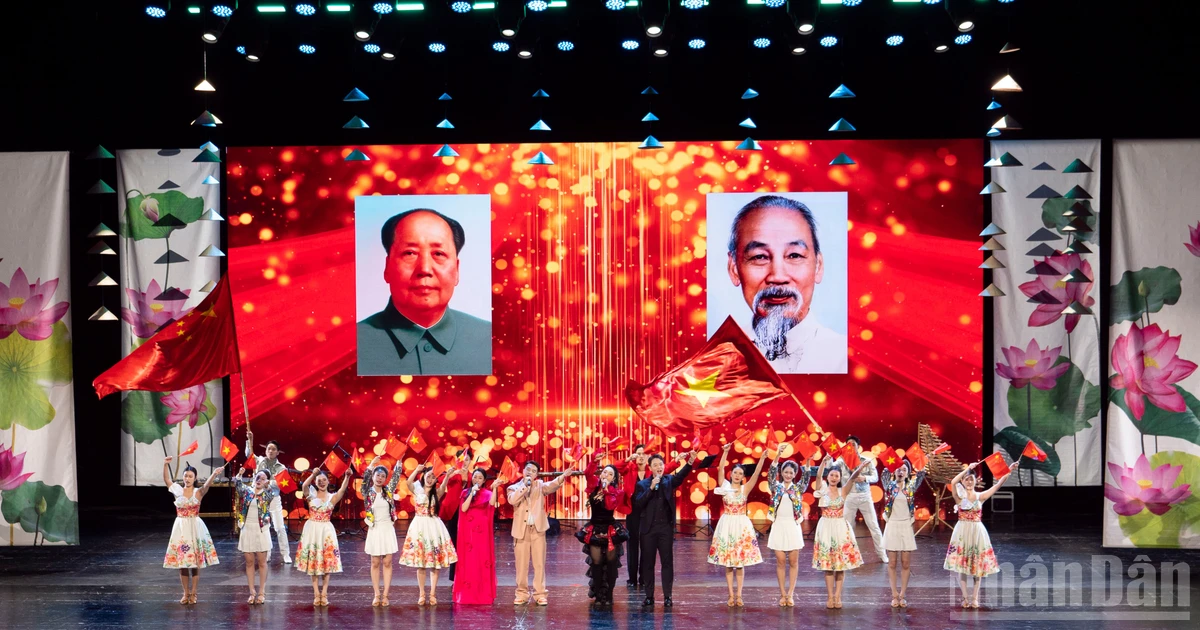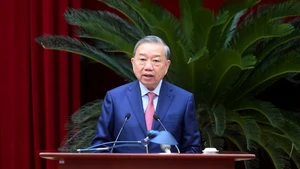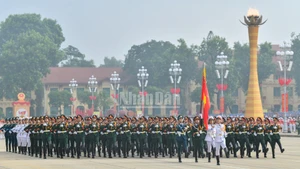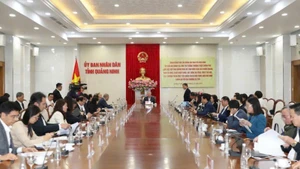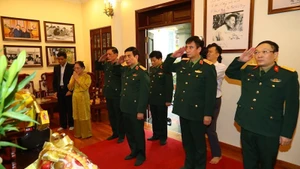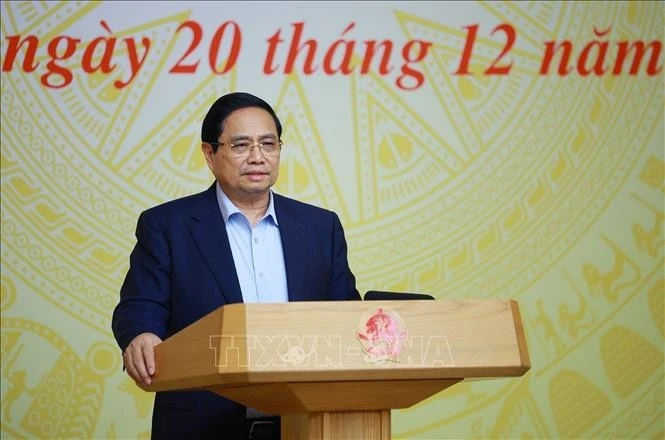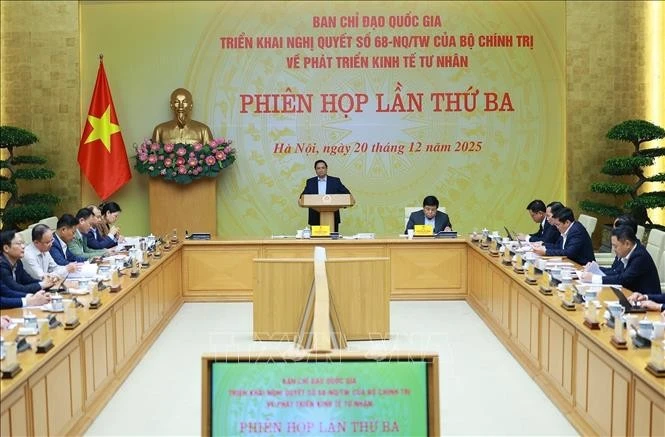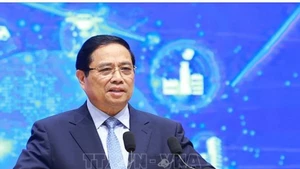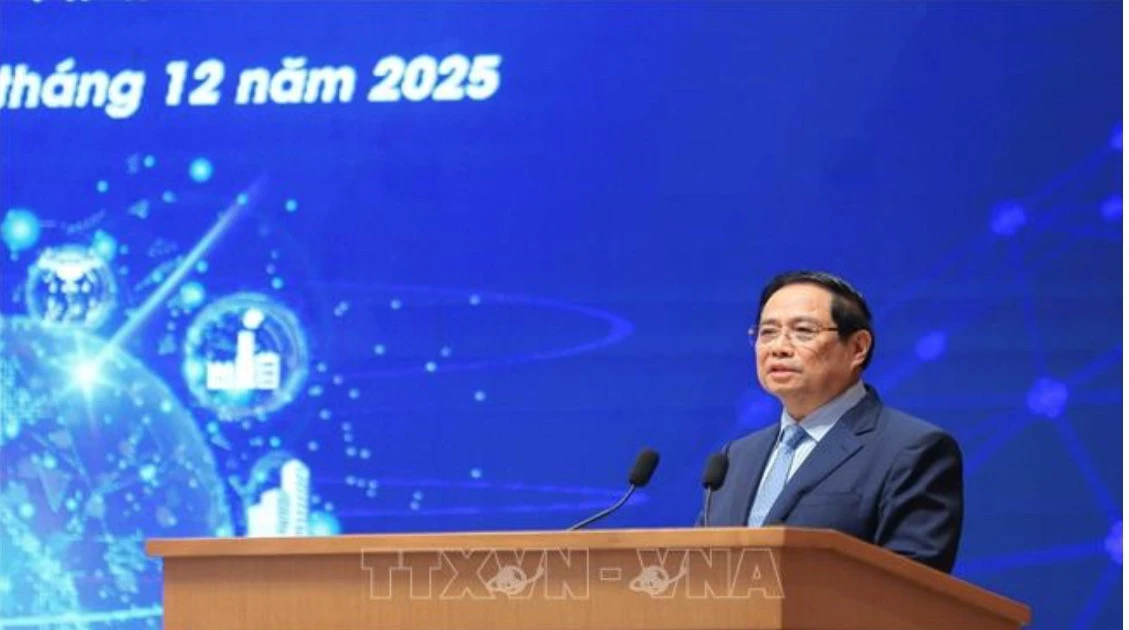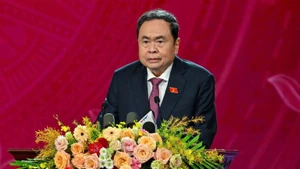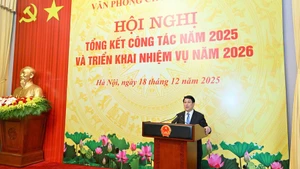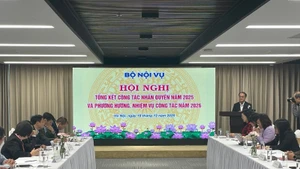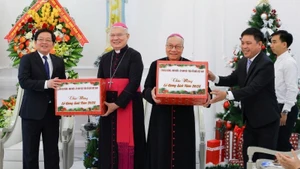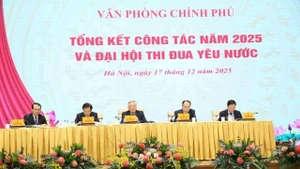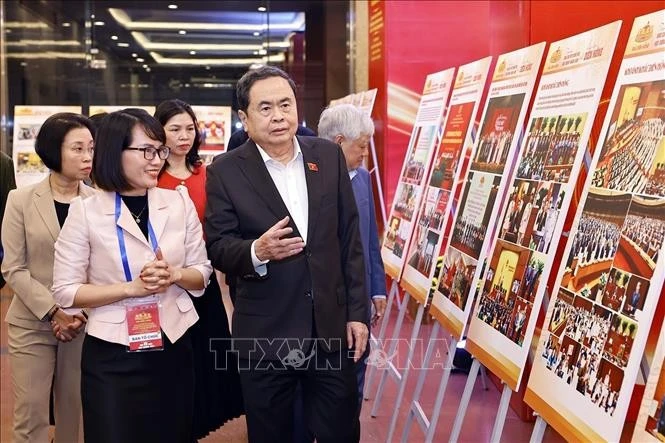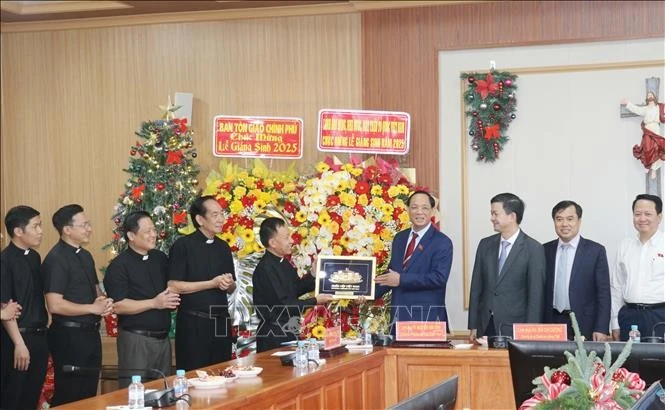Before the representatives of the people, the Party outlined the policy of leading the masses to seize power from the hands of the Japanese fascists and their collaborators before the Allied forces entered Indochina. The delegates warmly endorsed the Party’s policy of the General Uprising, and approved the ten policies of the Viet Minh Front:
1. Seize power and build a Democratic Republic of Viet Nam on the basis of complete independence.
2. Arm the people and develop the Viet Nam Liberation Army.
3. Confiscate property of foreign invaders and Vietnamese traitors, for nationalised or distributed to the poor according to situation.
4. Abolish all taxes imposed by the French and Japanese; establish a fair and light tax system.
5. Grant the people their rights:
- Human rights.
- Property rights (ownership).
- Civil rights: universal suffrage; freedoms of belief, thought, speech, assembly, and movement; national equality; equality between men and women.
6. Fairly redistribute public land, reduce land rent and interest rates, postpone debts, and provide relief for those in crisis.
7. Enact labour laws: regulate an eight-hour working day, minimum wage regulations, and social insurance.
8. Build a national economy and develop agriculture. Establish a national bank.
9. Develop a national education system: eradicate illiteracy, promote universal and compulsory basic education, and build a new cultural foundation.
10. Foster friendship and good relations with the Allied countries and oppressed nations to gain their sympathy and support.
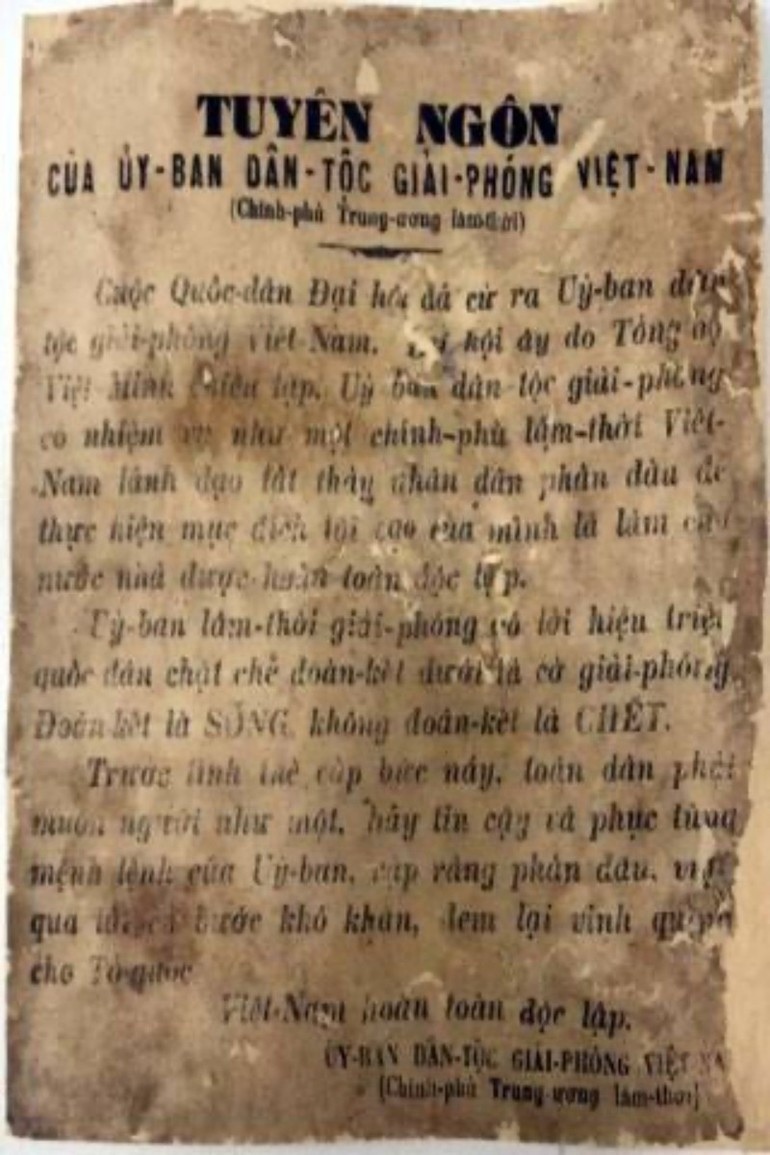
The Congress decided to establish the Viet Nam National Liberation Committee, chaired by Comrade Ho Chi Minh, with Comrade Tran Huy Lieu as Vice-Chairman. The committee members were Comrades Nguyen Luong Bang, Dang Xuan Khu, Vo Nguyen Giap, Pham Van Dong, Duong Duc Hien, Chu Van Tan, Nguyen Van Xuan, Cu Huy Can, Nguyen Dinh Thi, Le Van Hien, Nguyen Chi Thanh, Pham Ngoc Thach, and Nguyen Huu Dang. The Standing Committee consisted of five comrades: Ho Chi Minh, Tran Huy Lieu, Pham Van Dong, Nguyen Luong Bang, and Duong Duc Hien. The National Liberation Committee was entrusted with the mission — to represent the nation in dealings with foreign countries and to oversee all domestic affairs.
Simultaneously, the Viet Nam National Liberation Committee issued a rallying call to all the people and the National Salvation organisations.
The proclamation announced the establishment of the National Liberation Committee, fulfilling the expectations of the entire populace for “a national government with sufficient prestige and strength.” It comprised the most deserving individuals from the National Salvation organisations as the supreme national leadership body, enabling action in line with the very rapid changes in the situation.
The proclamation stated: “The National Liberation Committee will represent the people of Viet Nam and rely on the nation’s strength to win the sympathy of the democratic Allied countries.” It urged the people: “The great and decisive day of our nation has arrived. Let us rise, draw our swords, take up arms, and determine our own destiny. We are determined to win and will win.” (1)
Amid the fervent revolutionary atmosphere throughout the country, alongside Comrade Ho Chi Minh’s letter calling on the people, the proclamation of the National Liberation Committee further motivated and encouraged the people across the North, Central, and South regions to rise up in a general uprising to gain power.
Shortly afterwards, Comrade Vo Nguyen Giap—member of the Viet Nam National Liberation Committee—commanded a Liberation Army unit to march from Tan Trao (Son Duong, Tuyen Quang) to liberate the town of Thai Nguyen.
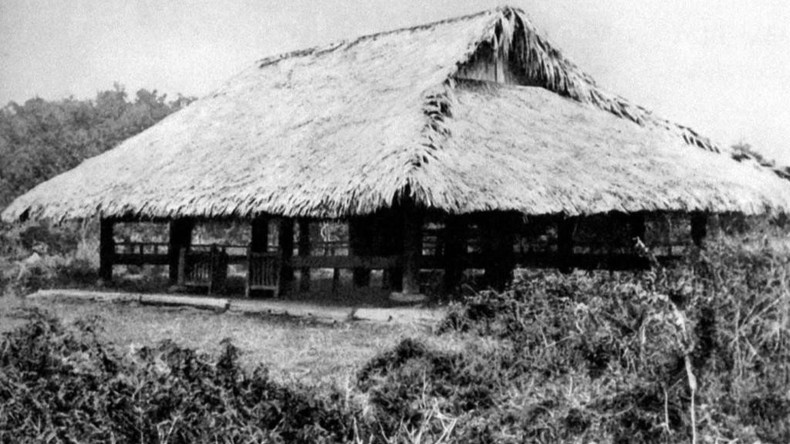
In Ha Noi, on the morning of August 16, at No. 101 Gambetta Street (now Tran Hung Dao), Comrade Nguyen Khang—standing member of the Northern Party Committee—convened a meeting with the City Party Committee to disseminate its resolution on establishing the Ha Noi Revolutionary Military Committee (the Uprising Committee).
Participants at the meeting unanimously agreed to launch of the uprising in Ha Noi. They recognised the need to better ascertain the attitude of the Japanese and their puppet regime; meanwhile, political activities should be intensified to mobilise the masses broadly and expedite preparations for armed resistance.
The Ha Noi Revolutionary Military Committee was established, comprising five comrades: Nguyen Khang, Standing Member of the Northern Party Committee; Nguyen Huy Khoi (alias Tran Quang Huy) and Le Trong Nghia, members of the Northern Party Committee; Nguyen Quyet, Secretary of the Ha Noi City Paty Committee; and Nguyen Duy Than, member of the Ha Noi City Party Committee.
Immediately that night, Viet Minh Communication Volunteer Teams spoke at theatres such as Hiep Thanh, Quang Lac, To Nhu, the Eden, and Majestic cinemas. The red flag with a yellow star appeared on the streets of Ha Noi.
In Quang Ngai, during the night, the uprising forces seized the provincial governor’s office and administrative buildings, arrested the provincial governor, confiscated all documents and weapons. The entire puppet government apparatus at the provincial level in Quang Ngai was smashed. A Japanese battalion stationed in the town did not react.
Quang Ngai was one of the earliest localities to seize power in the August Revolution of 1945.
In the Southern region, on the evening of August 16, the Southern Party Committee convened an expanded meeting at Cho Dem (Cho Lon province) to discuss the uprising.
A majority of delegates agreed that the conditions for the uprising were favourable and that failing to act would mean missing the opportunity.
Some delegates opposed launching the uprising, believing that the Japanese would suppress the revolution under Allied orders.
After frank discussions and a cautious spirit, the meeting resolved to accelerate preparations and remain ready to act upon receiving news from Ha Noi.
Once notified of Ha Noi’s uprising, the Southern Party Committee would immediately reconvene to decide the date for the uprising in Saigon and appoint a Provisional Administrative Committee for the South.
Following the meeting, preparations for the uprising proceeded rapidly in Saigon. The numbers of “Voluntary Trade Union” and “Pioneer Youth” teams were increased, and militia teams were better armed.
(1) Communist Party of Viet Nam, Complete Party Documents, National Political Publishing House, Ha Noi, 2000, vol. 7, pp. 562–563.

